Interview with Maja Cule, the Artist Who Decoded “Laughing Alone with Salad”
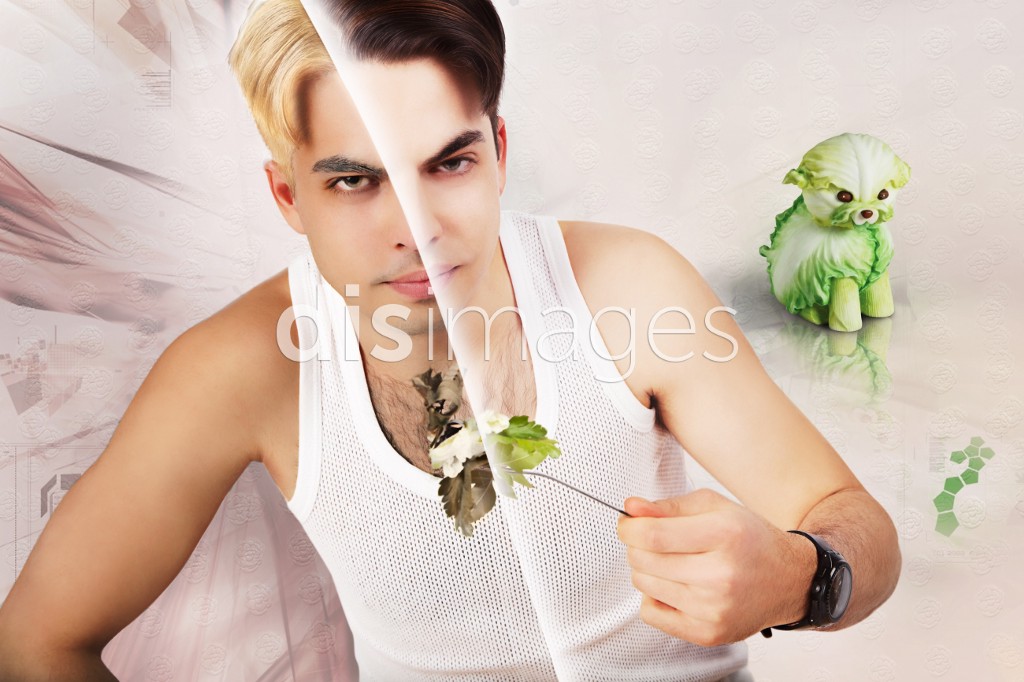
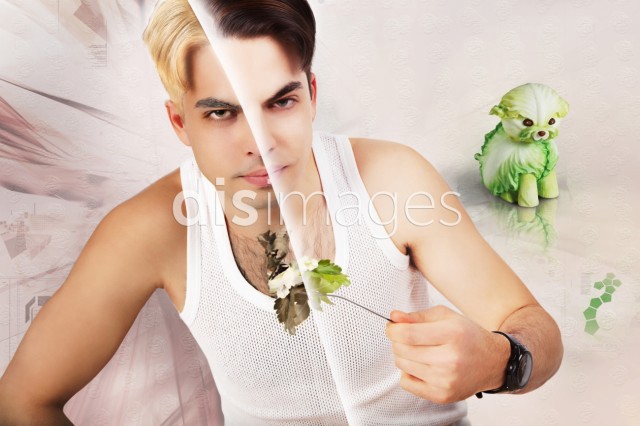
Maja Cule is a New York-based artist whose work breaks down the ways that online information and content influence offline actions. Recently, she collaborated with the fiercely interrogative “post-Internet” DIS Magazine on a project called DISimages: a fully functional stock image library aimed at “manipulating the codes and trends in stock photography.” Her photo series, titled “Laughing Alone with Salad,” is a series of acute, mesmerizing examinations of the Hairpin’s favorite meme, invented and brought to life on-site by Edith Zimmerman. Last week, I interviewed Maja on Skype.
Hello! Where exactly are you right now?
I’m in Croatia, home on vacation. It’s a perfect holiday — I get to read online without distraction, even though there’s really slow WiFi here and I can’t load any videos. I’ll be back in New York in about ten days.
How did you end up in the New York art scene?
I moved to NY five years ago, and decided to stay for a bit. I like to travel all the time and don’t really have a sense of belonging anywhere. But what I like about NY is that it is easy to cast and collaborate and consume a lot of information.
How did you get involved with the DISimages project?
I was invited by the DIS Magazine editors to do a project for their fully functional stock image library DisImages.com. They commissioned 20 artists to explore the stock genre, and I decided to do a series of photographs that referenced the “woman laughing alone with salad” meme while inverting the stereotypes. I got on Craigslist and cast celebrity impersonators, strippers and curators, and made an open call for models and friends to take part in the shoot.
When did you hear about the meme, and what attracted you to it?
Probably a while after the Hairpin posted the story. I’m curious, how do you know that you were first to post about it? Never mind, that’s a hard question.
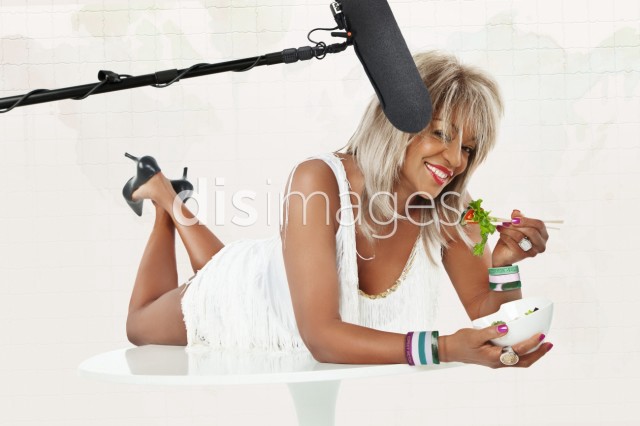
I am very interested in the stock photography genre — its specific aesthetic blandness, and the potential of drawing wrong conclusions from it. According to stock photography, woman laugh while shopping, eating salad and exercising; man laugh while talking on the phone, by their laptops, after meetings, and reading newspapers; kids laugh just always. Obviously, this is removed from reality. I want to identify what is real and where this all comes from.
Stock photography is a code without a message. It’s reached a point where content has been reproduced and mismatched so many times that it’s completely lost its meaning. It’s like the stuff you’ll see in knock-off fashion, or while shopping in Chinese supermarkets in Eastern Europe — for example, I just bought a shirt with a Shakespeare poem in script font down the front, and “Unique Fashion Disign” misspelled in bold sport-team lettering on the top, and a wholesale pack of underwear that says “Love-me-for-you.”
“Woman laughing alone with salad” is a meme that identifies codes in stock images that are not true to our experience — false representations of happiness, health, gender and pleasure. I think of these images when someone says “health,” at the same time I know that the image has absolutely no connection with feeling healthy or being healthy. It’s a cliché of healthy. Indoor Healthy.
What do you mean by Indoor Healthy?
Health can be represented differently in stock images, depending on whether models are shoot indoors or outdoors. Outdoor images show people connecting with nature, running ecstatically over fields and sandy beaches that resemble desktop backgrounds, performing unarticulated body language gestures under irrational flows of naturally released dopamine. Those are much different than healthy images shot indoors, in which models are shown turning New Years resolutions into action, working towards a better future, respecting health as a regimented discipline, using table manners to directly influence their immune systems.
The laughter in “woman laughing alone with salad” symbolizes health, and the satisfaction of a consumer. But for a long time, it was abnormal to use laughter to represent health or satisfaction. In ancient Greece, laughing portraits were associated with madness, arrogance or ignorance. It wasn’t until we discovered the chemical processes in our brain — the direct influence of laughter on health — that this association became common.
Amazing. So, you’re very process-oriented in making art. Was anything particularly different about the process of creating these stock images?
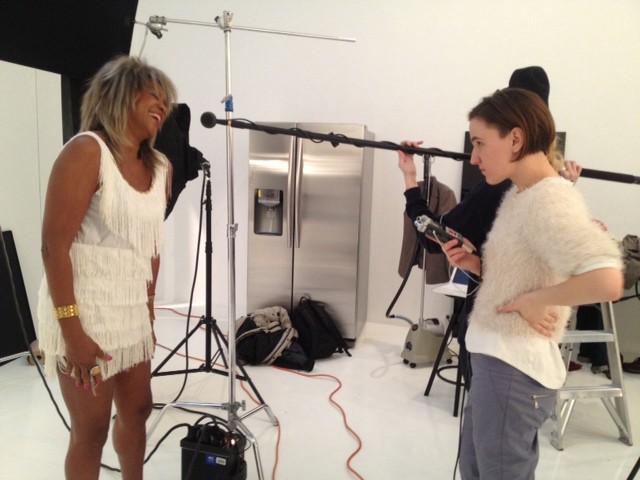
From a directing point of view, shooting a scene with healthy laughter is very hard — especially when the only props in the shoot are salad greens in a transparent bowl. Impossible. Stock images of women laughing alone eating salad depict very precisely fake emotions built on set.
So while working with these models, I did minute-long laughing exercises, and I recorded the audio track. It’s the inversion of the production model used in the early TV sitcoms with laugh tracks, a process that was called “sweetening” and was invented by American sound engineer Charles Douglass. From the 50s to the 70s, he had a monopoly over the laugh business, and developed a machine called a “laff box” which could reproduce 320 different types of laughs. These laughs would be mixed together to simulate a crowd, and it became kind of the first audio stock. Back then, industry experts reasoned that laugh tracks were a necessary evil in prime time television — laughter sells, and without the canned laughter, they thought a show was doomed to fail.
What does your shoot recording sound like? Like a laugh track?
It’s a long laugh that goes on for a whole minute, which sounds totally different from an eruptive laugh that lasts for five seconds. It’s disconnected from emotion — it sounds somewhat like a yoga exercise.
Let me ask you about a few specific things in your images. Where did the boom mic in the Tina Turner lookalike photo come from?
It was in the shot while we were recording the audio, and I decided to keep it in the photo as a reference to a sound that is very hard to imagine when you look at a stock image of a woman laughing alone with salad.
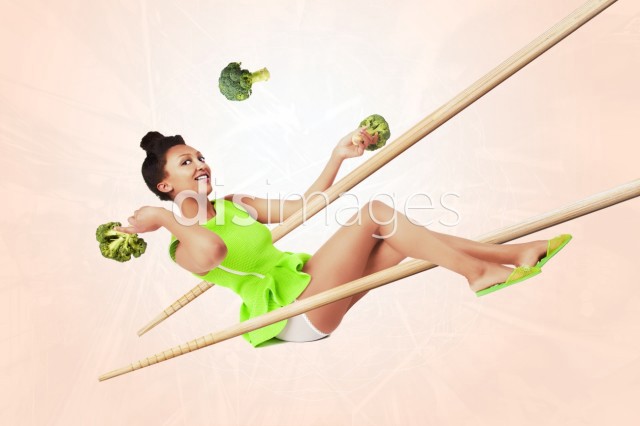
What about the composition of that first photo with the cabbage dog? I love that dog.
A lot of effects done in post-production reference the aesthetic and composition of ads for skincare products. The cabbage dog is located as a cosmetic product would be in the ad, top right with mirror reflection. Skin care ads often simultaneously depict the product and its impact, erasing the time in between that is necessary for the change to develop. This is similar to that burst of laughter while eating salad, but it also reflects how I work; I never produce any traces until the work is done.
So interesting. Was the production of these images as important to you as the end result? Did you have a vision of how exactly you wanted the stock photos to turn out, or did it evolve as you produced them?
I always start by fabricating specific situations, and early on I had the idea of doing these laughing exercises at the shoot. I also wanted to work with types of models that are hard to find on stock image sites laughing and eating salad — models with atypical bodies.
And I wanted to influence the circulation of these images by using tags that could be assigned to these images that aren’t specific to the “healthy” stock photography genre.
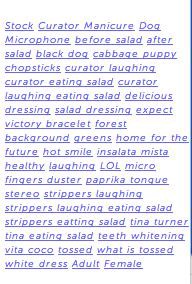
Oh, I am so interested in these tags. How did you write them?
Some of the tags I added were very specific to the content, and others make it hard to imagine the final image if you see the tags first. I wanted to include some tags that represent negative associations, because I think that makes them more real. Editors that are hired to write tags on stock image sites use positive attributes and affirmative nouns, but still we can clearly identify discrimination in these filters. There’s a lack of equality in representation that I wanted to acknowledge and avoid.
Anyway, tags for stock images can be either very bland or absurdly specific, and this aspect of the project will develop as the DISimages site continues to grow. It’s a fully functional site, with images being purchased and borrowed from the database. I would love to see my images as an ad for some cosmetic product, or as a huge backdrop in the vegetable department of a supermarket, or on a keychain in a botanical garden, or a leaflet for a cardio training class.
Is your sense of humor an important part of your art?
I think what comes out as funny in my work is being disrespectful of differences, and forcefully marrying things that pretend to be better than other things.
Yes. Your work gets at the intersection of art and commerce in such a sharp and interesting way. What draws you to this space?
I’m always excited to see the ways that art and commerce overlap, and the hybrids that they produce. I don’t really believe that it’s possible to do relevant things in one field and stay completely separate from the other. Corporate philosophy and branding is such a conceptual field, and I draw a lot of inspiration from it. It’s a back and forth process — just a hundred years ago there was no such a big mirror of contemporary society as advertising is today.
More of Maja Cule’s work can be found here.